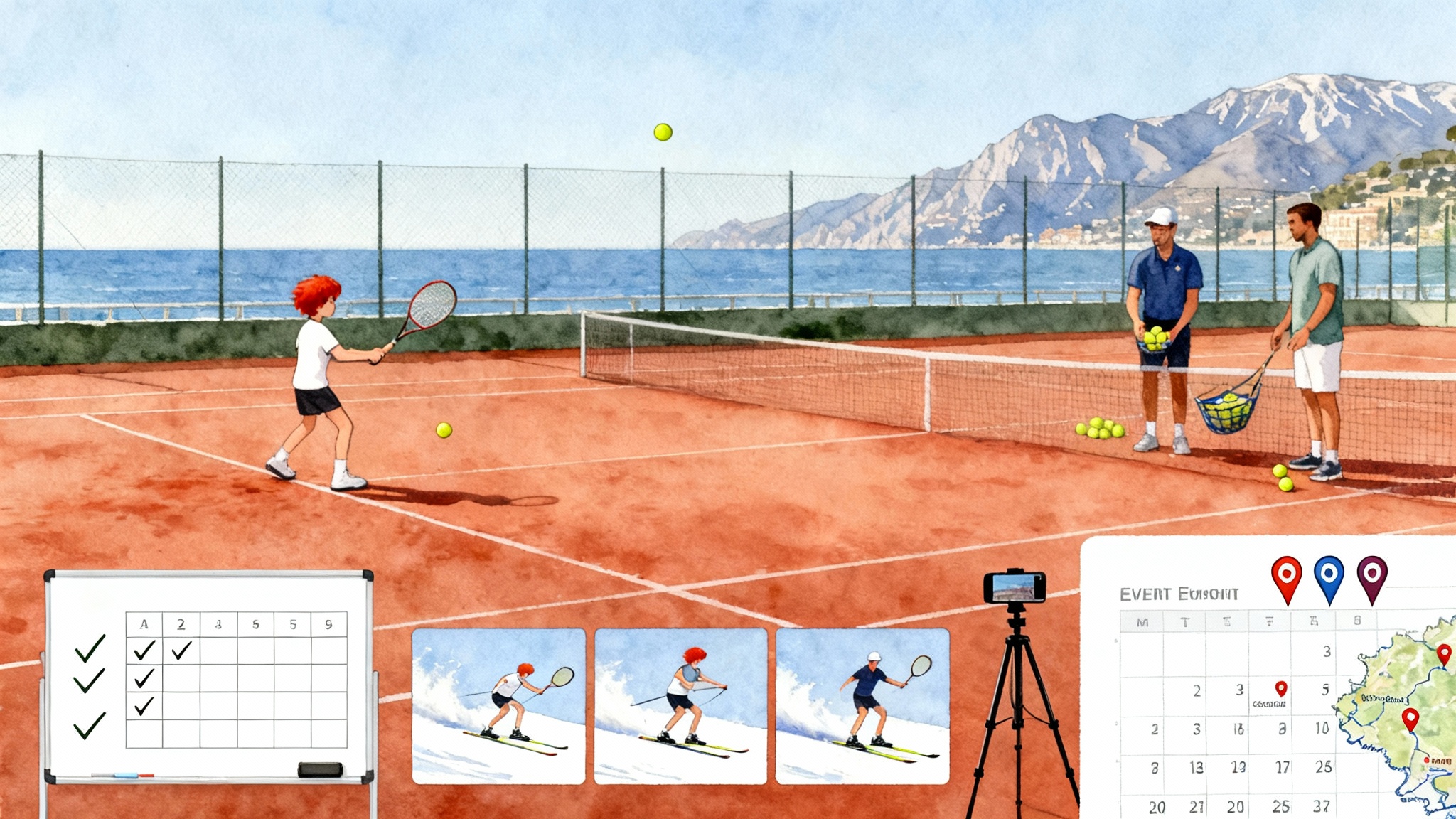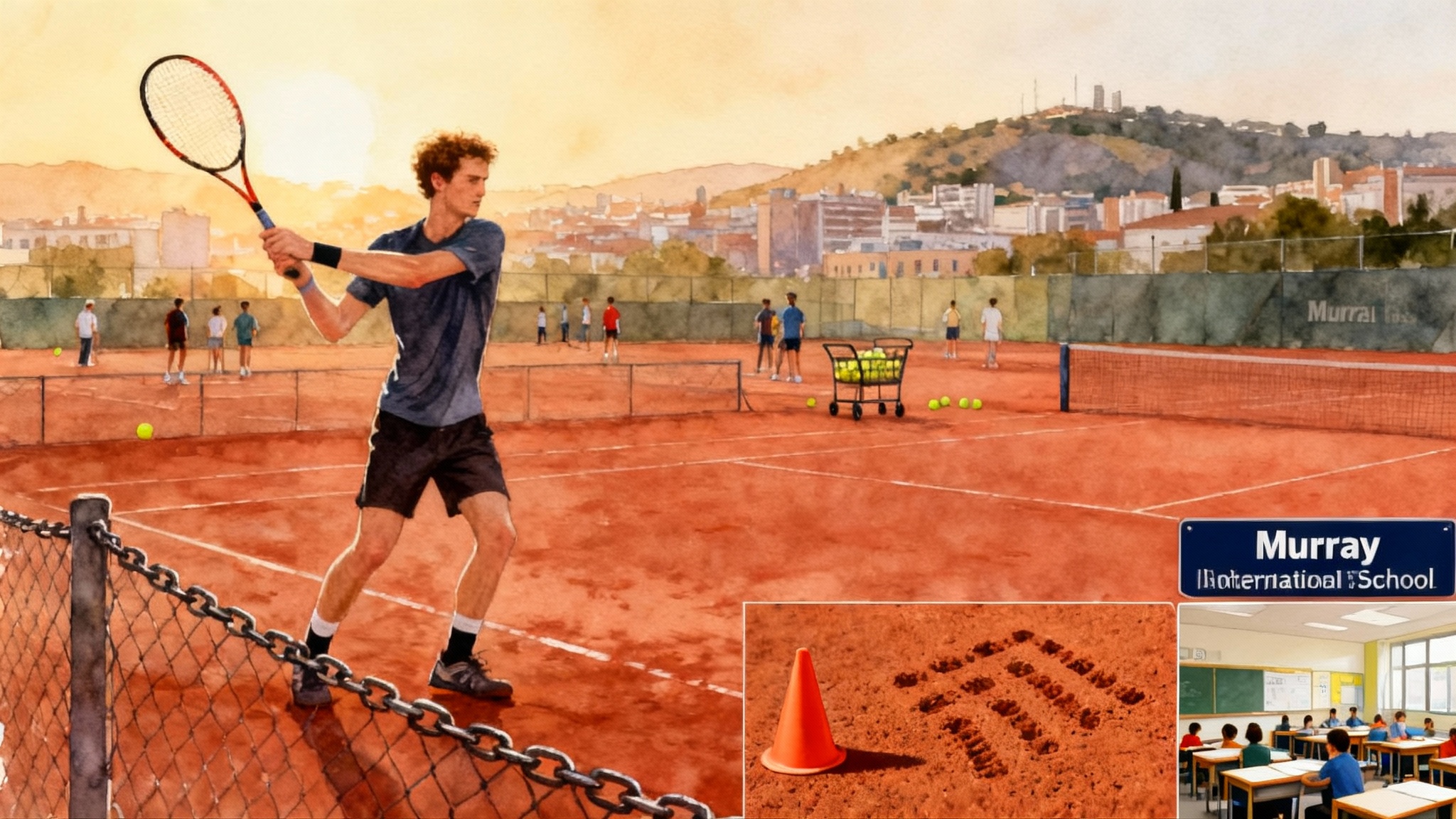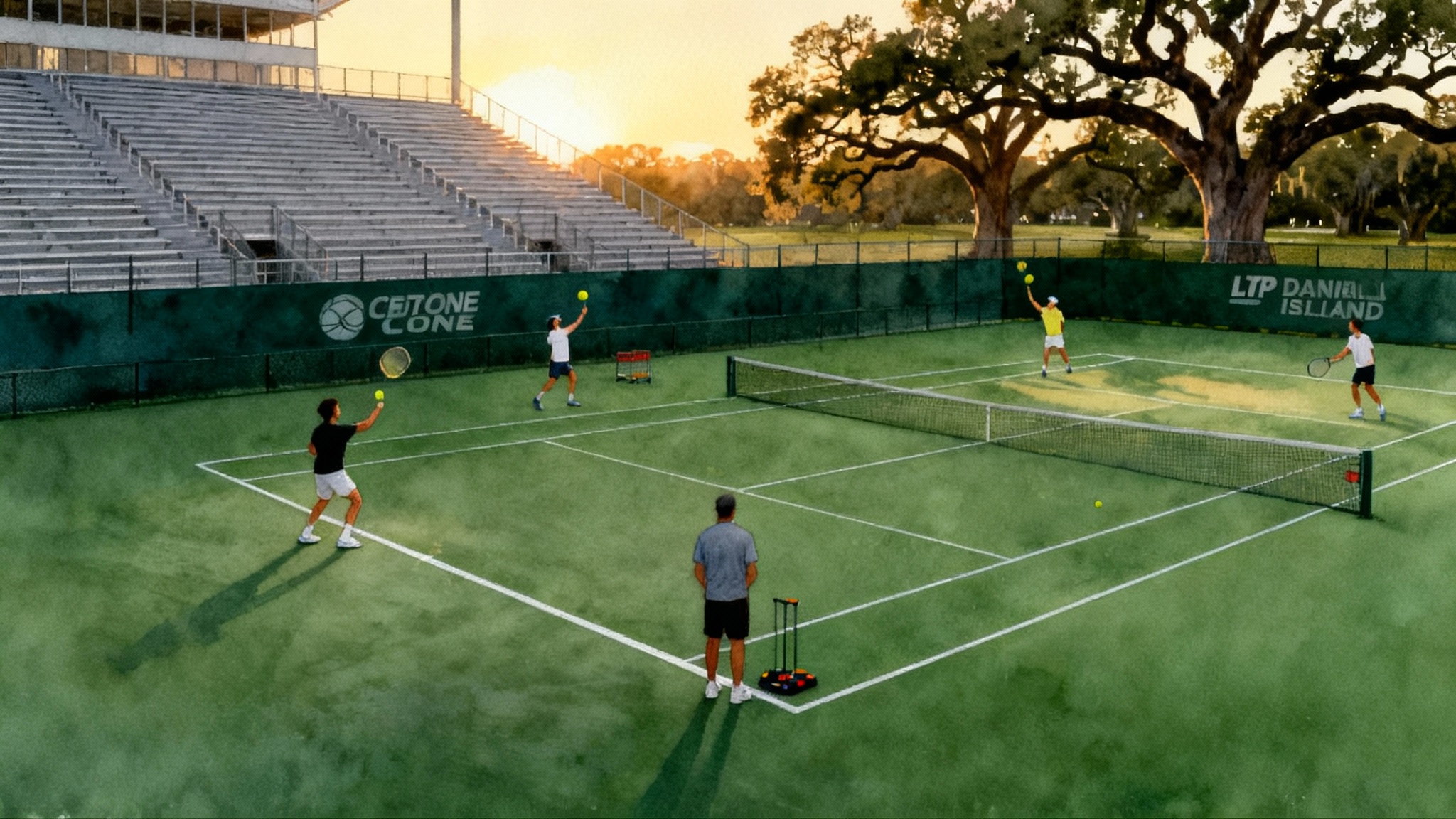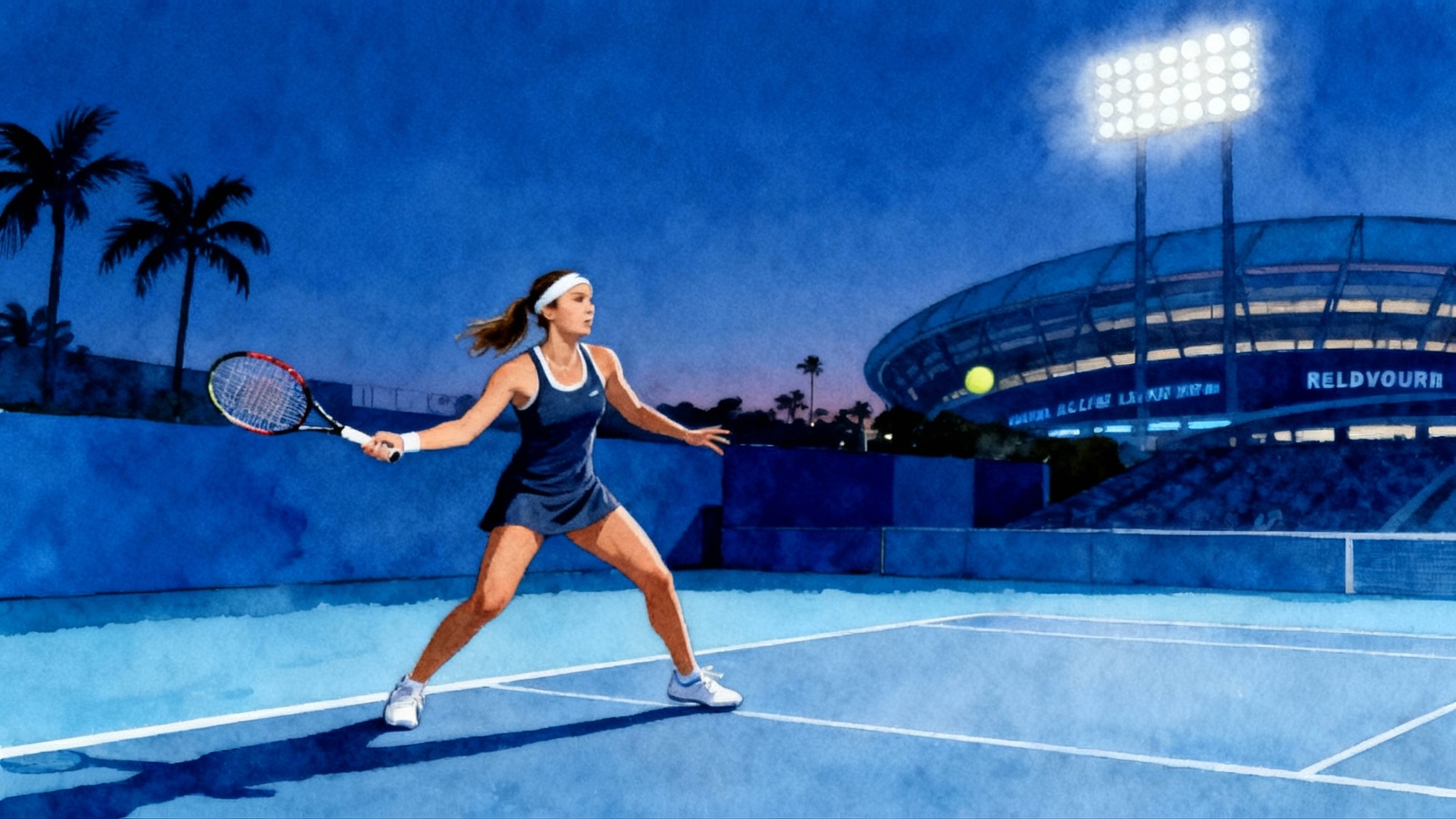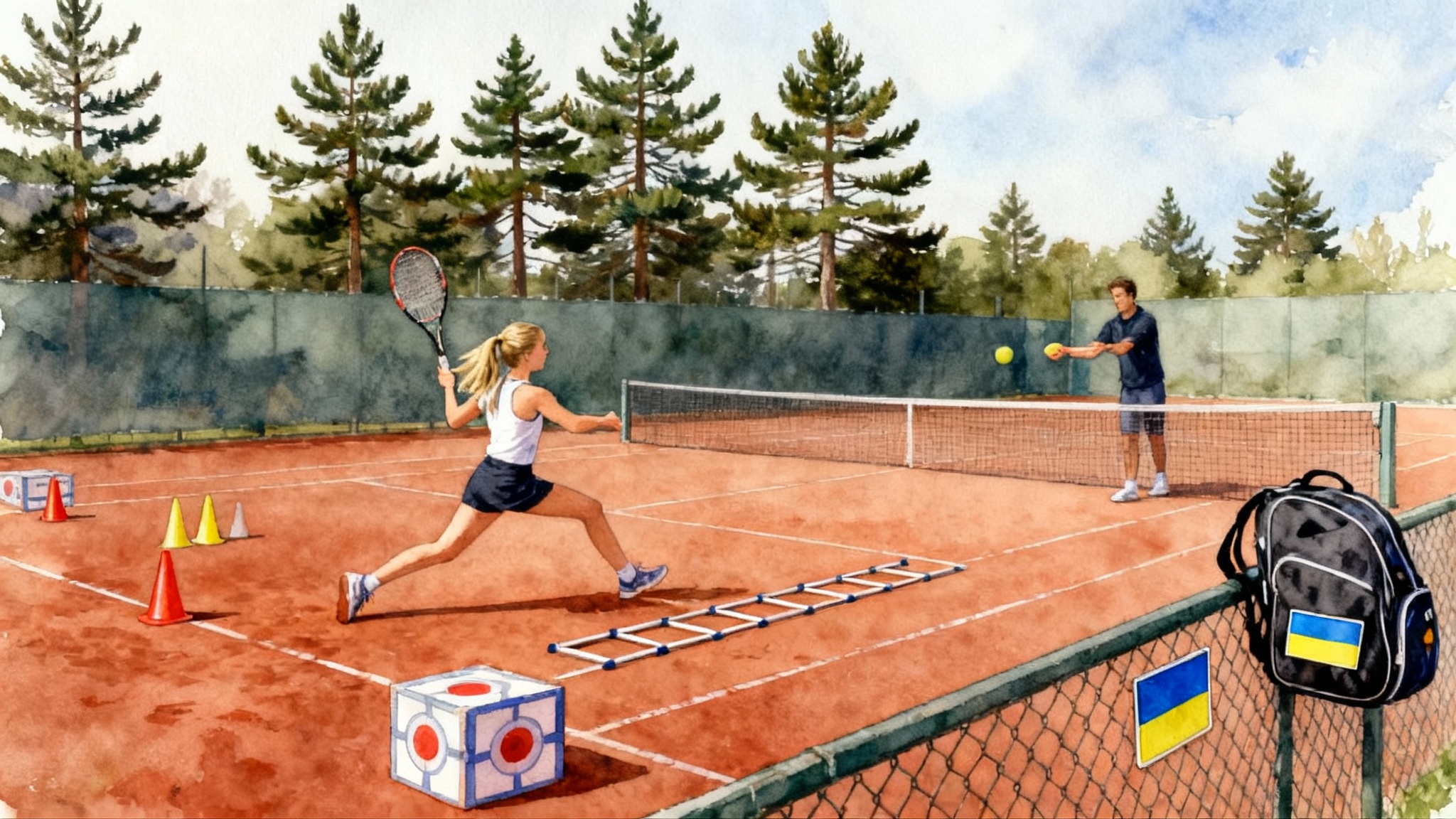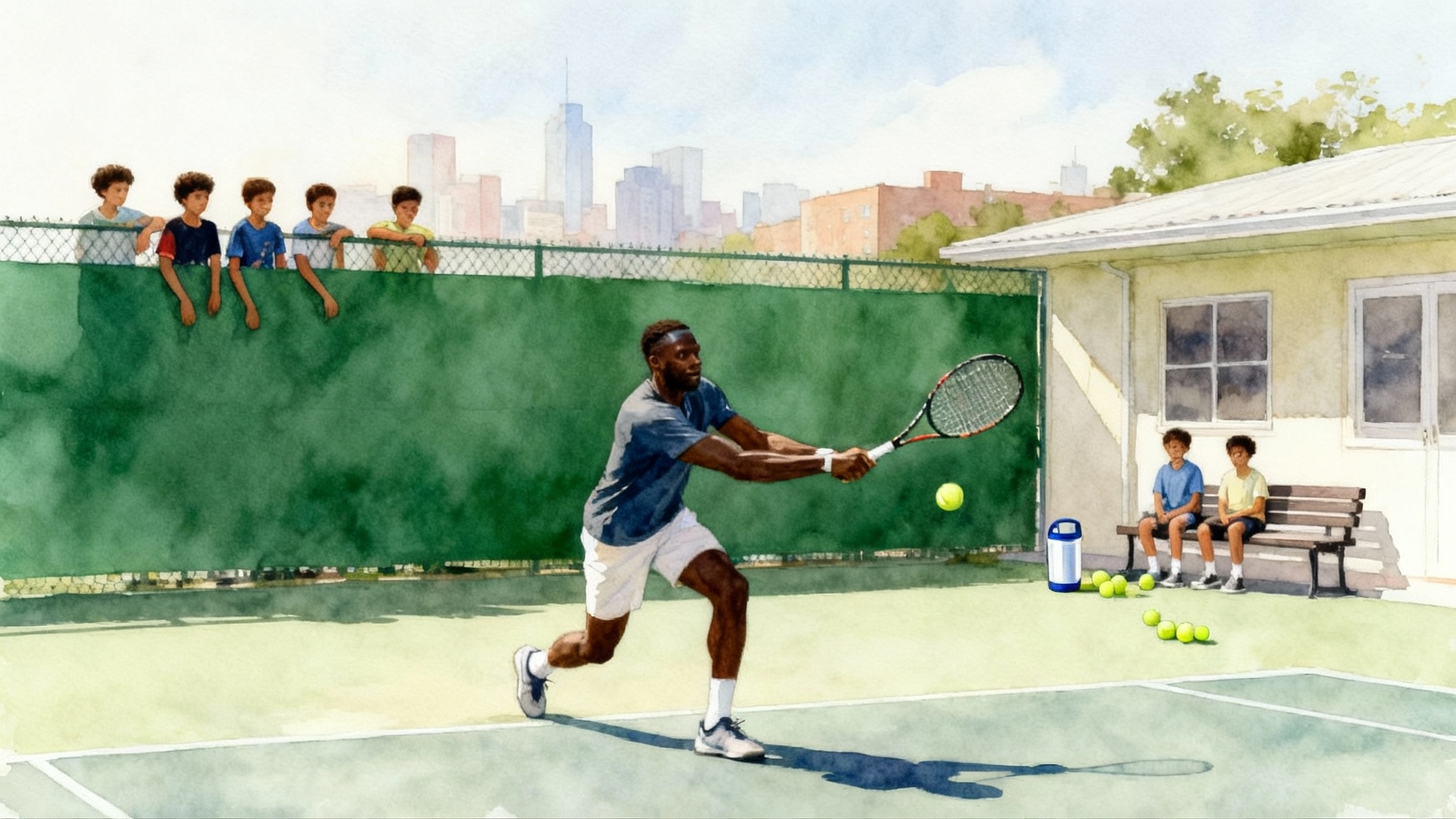Build a Reliable Forehand: A 30-Day Plan That Works
Your forehand should hold up when the score tightens. This 30-day plan gives players and coaches a clear roadmap with weekly goals, simple biomechanics, and targeted drills that translate to match day.
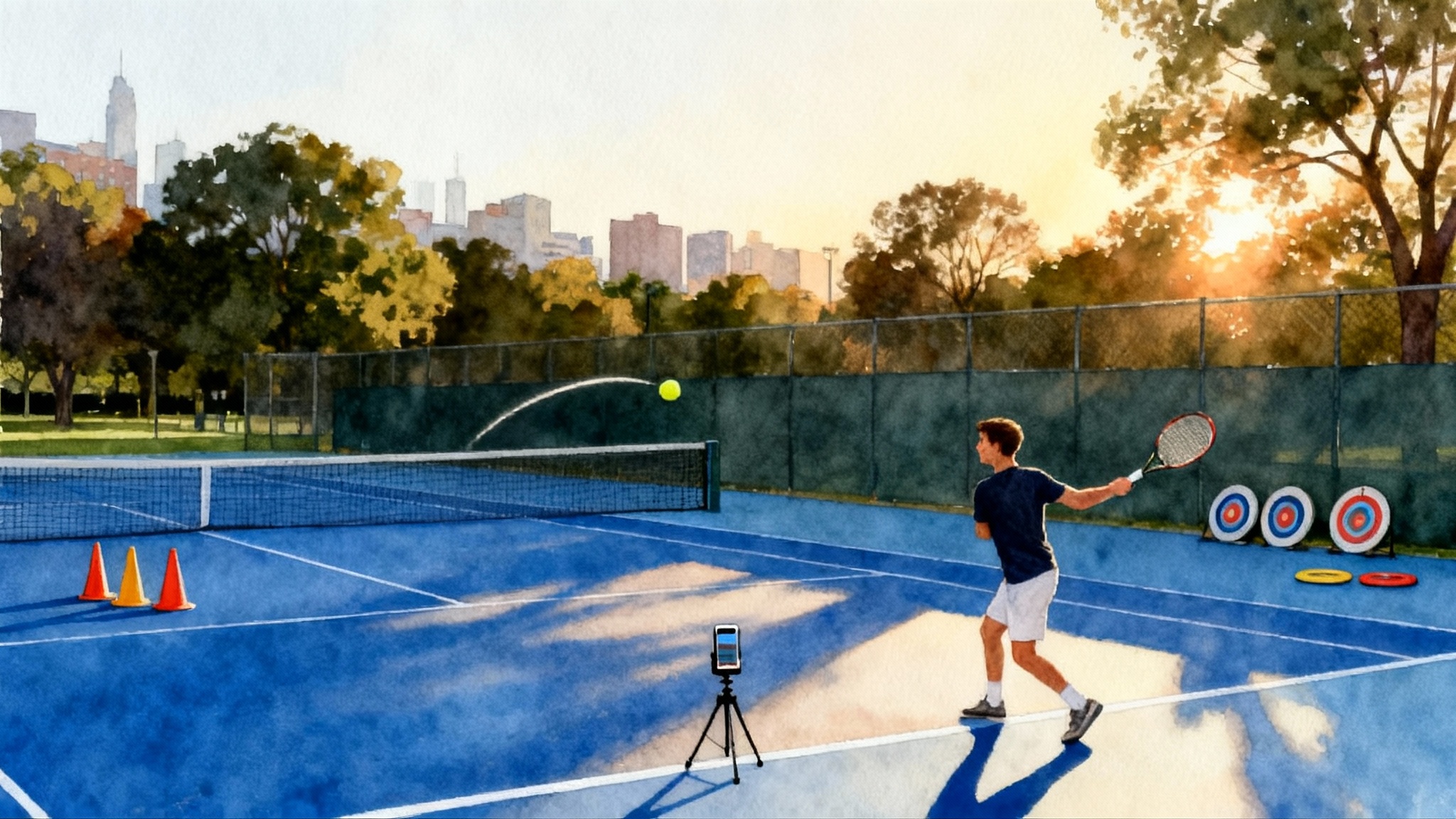
Why most forehands break down under pressure
If you can rally for twenty balls in practice but miss on break point, the problem is rarely talent. It is usually a system problem. Most players build a forehand with pretty positions but no tolerance for stress. When the heart rate climbs, the swing gets late, spacing collapses, and the racket face wobbles. A reliable forehand is not about a perfect photo. It is about a repeatable shape that survives fast balls, awkward heights, and nerves.
Think of your forehand like a good paper airplane. Its nose must point the right way, the wings need the right curve, and you must throw it with consistent rhythm. If any one of those parts is off, the flight becomes unpredictable. Your goal over the next 30 days is to tune the shape, the contact, and the timing so the ball flies where you expect even when the match gets loud.
This plan is built for club players, competitive juniors, and coaches who want a structured path. You will work in four weekly themes: shape, contact, timing, and transfer to matches. Each day asks for 30 to 45 minutes. If you are coaching a group, most drills scale easily with cones and a few baskets of balls.
The 30-day plan at a glance
- Week 1: Build the swing shape and topspin window.
- Week 2: Master spacing and a clean contact point.
- Week 3: Train timing and pace tolerance.
- Week 4: Transfer the forehand to real points.
You will track three numbers throughout:
-
Launch window: how many of 20 balls clear the net by 1 to 2 racket heads.
-
Depth band: how many of 20 land deep in the last third of the court.
-
Rally tolerance: your rally length on neutral crosscourt forehands without forcing.
Equipment checklist
- Two baskets of balls. Add a mix of low compression red, orange, and green balls if you are rebuilding technique, especially for juniors.
- Four cones and two throw down lines or painter’s tape.
- A smartphone on a mini tripod for slow motion video. Many phones record 120 frames per second.
- Optional: a small metronome app or a playlist with a steady beat at 80 to 110 beats per minute.
- Optional: targets like flat discs. Brands like Babolat, Wilson, and Yonex make durable options if you need new gear.
Week 1: Shape and the topspin window
Your first job is to build a swing path that creates a predictable arc. You are not chasing power. You are learning to send the ball through a window above the net with a consistent spin. For a model of heavy, disciplined arc, study the Rafa Nadal Academy topspin habits that made high‑margin offense reliable.
Day 1: Fence brush
Stand one step from a chain link fence. Shadow swing with the string bed brushing lightly up the fence from hip to shoulder height. This forces a low to high path and a stable wrist. Do 3 sets of 15 shadow swings, then 3 sets of 15 drop hits sending the ball over the net to the opposite service box.
Coaching cue: Imagine you are painting a vertical stripe up the fence with your strings. Keep the face quiet, no flip at the top.
Day 2: Line brush
Place a throw down line two feet in front of you, parallel to the baseline. Feed yourself drop hits that start below the line and finish above your shoulder. The ball should clear the net by the height of two stacked rackets. Record 20 balls and tally how many pass through the window.
Common fault: Finishing around your body too soon. Fix it by finishing the hand high, with the elbow away from the ribs.
Day 3: Lift then wrap
Players often wrap the finish before lifting. Separate the two actions. Hit sets of 10 where your only focus is to lift the hand up first, then allow a relaxed wrap over the shoulder. Use orange balls if needed to exaggerate the feel.
Day 4: Edge lead
Shadow swings with the racket edge leading into contact. Then flip to the string bed just before meeting the ball. This builds a smooth lag without forcing the wrist. Do 30 shadow reps, then 40 fed balls.
Check on video: At the lowest point of the loop, the strings should face the back fence, not the sky. This positions the racket for a vertical path.
Day 5: Two target lanes
Set two disc targets crosscourt: one near the sideline two feet inside the baseline, and one deeper near the corner. Alternate ten balls to each target. Keep the same lift. Do not add speed yet. Aim for 14 of 20 in the targets.
Day 6: Spin ladder
Start with red balls for ten shots, then orange for ten, then green for ten, then regular balls for ten. Try to keep the same height and arc. The lighter balls train the path without arm tension. Tally the window score for each set. The goal is small drop off as you move to the faster balls.
Day 7: Review and reset
Film from side view and behind the baseline. Compare to day 1. You should see a clearer low to high path, a slightly closed racket face at the lowest point, and a high relaxed finish. Record your best 20-ball window score.
Week 2: Contact and spacing
A great swing shape fails if contact is late or cramped. This week you will train how far you stand from the bounce and where you meet the ball.
Day 8: Split and first step
Many spacing issues start before the ball crosses the net. Work on a timely split step just before your opponent strikes. On the read of a forehand, take your first step with the outside foot toward the contact zone. Shadow this in small rallies, then in live feeds. Count how often you split before the opponent strikes. Aim for 8 of 10 correct splits.
Day 9: Distance ladder
Lay three cones along the ideal contact line: one for inside the ball, one at neutral, one for outside. Feed crosscourt balls, then call the cone you will meet. Inside means slightly closer to the ball with more closed stance. Outside means a step farther away with more open stance. This teaches your body to adjust spacing rather than lock into one stance.
Day 10: Catch and hit
Have a partner toss underhand from the opposite service box. You catch the ball with your non hitting hand on the bounce line where you would like to contact, drop it, and then hit. This builds an instinct for where to meet the ball in space. Goal: after 20 reps, your contact point should happen in front of the lead hip and at waist to chest height.
Day 11: Towel test
Place a small towel under your hitting arm at the start of the swing. Keep gentle pressure through the first half of the swing, then let the towel drop as you extend to contact. This balances connection and free extension. Hit 40 balls and note how it changes your feel of reach and spacing.
Day 12: Height tuner
Ask a partner to feed three heights: below knee, waist, and shoulder. For low balls, sit and lift. For high balls, set the strings slightly more closed and drive across the court. Focus on keeping the contact in front on all three heights. Tally your depth band score for 30 balls.
Day 13: Contact line game
Mark a chalk line three feet inside the baseline. Your ball must land beyond the line to count. Play first to 11 points crosscourt with a partner. You can only use the forehand and you must recover to neutral after each hit. This rewards clean contact and spacing.
Day 14: Review and reset
Film from behind and draw a line on the video at your contact point. Over ten forehands, the line should be consistently in front of your body. Compare depth band numbers to last week. You should see improvement as spacing gets cleaner.
Week 3: Timing and pace tolerance
Now you will teach your forehand to arrive on time against different speeds and spins. A reliable stroke is a timing solution as much as a technique solution.
Day 15: Three beat rhythm
Use a metronome or a song at 90 beats per minute. Count load, drop, hit as three even beats. Shadow swings for two minutes, then live feeds for 50 balls. This builds a neutral tempo you can speed up or slow down without losing structure.
Day 16: Bounce to hit clock
Call the time between bounce and hit in tenths. For example, say point seven if you take the ball early, or one point one if you let it rise. This awareness lets you make active decisions rather than reacting late. Do three sets of 12 with different tempos.
Day 17: Pace ladder
Ask a partner to escalate feed pace every five balls. Your job is not to swing harder. It is to start earlier. Trigger the unit turn as the ball leaves the opponent’s strings. Keep your window height and note your rally tolerance. You should hold at least 8 ball rallies at the fastest pace.
Day 18: Spin mix
Alternate flat, heavy topspin, and slice feeds. Adjust height, spacing, and tempo without changing the essential swing shape. If heavy topspin pushes you back, drop the racket head earlier and lift through it. If slice stays low, sit and drive. Record depth band for each spin type.
Day 19: Serve plus one pattern
Serve wide on the deuce court if you are right handed, then play the next ball to the open court with the forehand. This trains immediate timing after a serve. Set a target disc two feet inside the sideline. Do 20 reps and track how many plus ones land in your target.
Day 20: Two ball tolerance
Rally crosscourt with a partner who mixes two paces at random. You must make 10 in a row at any mix. If you miss, reset. Focus on starting the swing earlier, not swinging faster.
Day 21: Review and reset
Film a rally at your partner’s highest pace. Freeze frame at the moment your front foot plants. The racket tip should already be moving forward. If it is still falling, you are late. Adjust your ready position and unit turn timing.
Week 4: Transfer to matches
You will now translate practice to pressure. The stroke must hold when scoring starts. For inspiration on clean, pattern-based offense, study the Piatti blueprint for Sinner and how disciplined shapes scale under stress.
Day 22: Pattern library
Pick three patterns that suit your game and court speed:
- Crosscourt heavy forehand, then inside out to the backhand corner.
- Short angle forehand, then deep to the open court.
- Deep middle forehand to jam, then change to crosscourt.
Run each pattern for 12 balls. Score one point only if both balls land in your targets.
Day 23: Edge of stress sets
Play first to 15 using only forehands. Start neutral crosscourt. Your partner adds pressure by changing pace or height every third ball. Between points, take one breath and rest your racket hand heavy by your side to unload the forearm. This simulates the mini resets you need in matches. For more ideas on competitive constraints, look at All In Academy pressure sets.
Day 24: Directional discipline
Use the simple rule: change direction only if you have time and height. If the ball is heavy or low, send it back crosscourt. If it is short or high, you can go line or inside out. Play a set to four games and track how many errors come from poor direction choices. Aim to reduce by half relative to your baseline session.
Day 25: Defensive forehands that live
Start each point two steps behind the baseline. Your partner pins you deep. Your only goal is to send the ball high crosscourt with margin and buy time to recover. Score one point for any ball that lands past the service line with safe height. Learn to love ugly winners of time.
Day 26: Short ball conversion
Feed a short ball to the forehand side. Your job is to attack to a corner and close the point in two more balls. Do not redline. Use your same shape with a slightly lower net window. Run 20 reps and count two ball conversions.
Day 27: Scoreboard pressure
Start games at 30 all and only play points that begin with a neutral crosscourt forehand rally. The serve rotates, but every point starts with your strength. You are teaching your nervous system that your forehand is trustworthy under common pressure scores.
Day 28: Match play with constraints
Play a practice set. Two constraints: you must hit a forehand on the first neutral ball, and you must average a net clearance of roughly two racket heads. Have a teammate tally how many times you meet those constraints.
Day 29: Benchmark test
Repeat the three numbers from the start: window, depth band, and rally tolerance. Aim for 16 of 20 through the window, 12 of 20 in the deep band, and 12 ball neutral rallies on demand.
Day 30: Seal the habit
Write a personal checklist on a small card to review before practice and matches:
- Split before the opponent’s hit.
- Unit turn early.
- Low to high lift, then wrap.
- Contact in front.
- Choose crosscourt unless you have height and time.
Keep the card in your bag. Quick reminders beat long speeches when the mind is noisy.
Video and feedback loop
You do not need a fancy camera. A phone at 120 frames per second will do. Record from two angles: behind the baseline and open stance side view. In each clip, check three frames: lowest point of the loop, contact, and finish.
- Lowest point: strings point slightly to the back fence. Racket head below the ball.
- Contact: lead hip slightly open, hand in front of the body, face quiet.
- Finish: hand high, elbow away from ribs, shoulders turned.
If you use a tennis app such as SwingVision, mark only two metrics at first: net clearance and depth. Do not drown in numbers. Build confidence by tracking the same few things each week. If you coach, share side by side clips with players and circle the same three checkpoints so your language stays consistent.
Common myths and simple fixes
- Myth: You must swing faster to handle pace. Fix: Start sooner. Earlier unit turn and earlier drop solve lateness without extra effort.
- Myth: The wrist should stay locked. Fix: The wrist should stay stable, not stiff. A relaxed forearm allows the racket to travel on a smooth path.
- Myth: Every forehand should look identical. Fix: Keep the core shape but allow different finishes for different heights and intentions.
- Myth: Closed stance is always better. Fix: Use a closed stance for heavy balls you can step into, and an open stance when pulled wide or on faster rallies.
A quick troubleshooting tree
- Ball flies long: Check your lowest point. If the racket starts level with the ball, you will hit flat. Drop the tip earlier. Also move contact a hand width farther in front.
- Ball dumps in the net: Check your lift. Finish higher and aim for the two racket head window. Use the fence brush drill as a reset.
- Shanks and frame hits: You are too close or reaching with the shoulder. Back up half a step and feel the elbow away from the ribs through contact.
- Under pressure you guide the ball: Add one breath before the return to neutral and re commit to your three beat rhythm. Count it out loud in practice matches.
Coaching notes for juniors
For ten and under players, work mostly with red and orange balls in weeks 1 and 2. The lighter balls give more time to feel shape and contact. Use simple images. Paint the fence. Lift the rocket ship through the clouds. For adolescents, be careful with volume when growth spurts and wrist changes show up. Use fewer balls and more video to guide.
Parents can help by tossing from the service line and counting net clearance out loud. Keep feedback short and specific. Good lift. In front. Nice split.
What to do after day 30
You built a reliable forehand. Now keep it. Rotate three maintenance sessions each week:
- Session A: 20 minutes of shape resets, then 20 minutes of crosscourt tolerance.
- Session B: Pattern work with serve plus one and short ball conversions.
- Session C: Live points with one constraint, such as two racket head clearance or change direction only on time and height.
Every month, run the benchmark test. If any number dips, spend one week back on that theme. Think like a pilot. You do not rebuild the plane each flight. You run your checks before takeoff and after landing.
The bottom line
A forehand you trust is built, not found. Over these 30 days you shaped the swing path, cleaned up contact, trained timing, and then proved it in points. The payoff is not just a nicer rally ball. It is a calmer mind in big moments because you have a process that holds. When the score reads 30 all and your chest tightens, you will still see the window, feel the lift, and send the ball where you planned. That is reliability. That is a forehand that wins matches.
